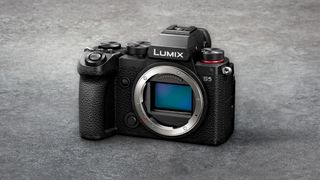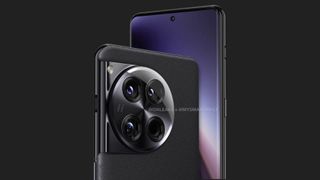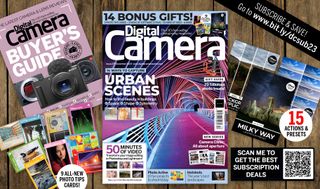The best hybrid cameras are the perfect solution for content creators who shoot stills and movies. Designed to capture pin-sharp photos and dynamic videos equally well, these models give you the most flexibility and let you switch from one mode to another in an instant.
In this guide, we've tested and reviewed the best hybrid cameras at a variety of price points and skill levels, to help you find the best one for you.
If you shoot professionally, then the ability to take both stills and video can make you more attractive to clients – whether it’s the ability to grab a bit of video at a wedding, or capture behind-the-scenes stills at a music video shoot. In the past, being this versatile would have required toting around two heavy camera setups – now, a good hybrid setup means you only need one.
When choosing the best hybrid cameras, we've picked models with decent video resolutions and frame rates – 4K is a prerequisite, and although not every job will require it, you do need to at least have the option. A mic input is highly desirable, too, as is a vari-angle LCD screen for different shooting angles.
For stills, a good hybrid camera should pack a decent burst-shooting rate, an autofocus system that can keep up with fast-moving subjects, and enough megapixels to make a decent print of an image. There are also features that will benefit both functions, like an extra card slot and a broad lens selection.
We've narrowed it down to just a few of the best hybrid cameras, covering a range of price points. Read on to get started, or check out our guides to the best cameras for photography and best cameras for video for some suggestions of models that specialize one way or the other.
The best hybrid cameras in 2023
Why you can trust Digital Camera World Our expert reviewers spend hours testing and comparing products and services so you can choose the best for you. Find out how we test.
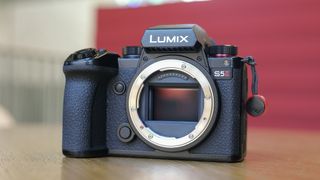

The Panasonic Lumix S5 II builds on the original Lumix S5’s tough compact frame, class-leading 5-axis in-body image stabilization, and excellent color science. The most significant new addition is a Phase Hybrid autofocus system that combines PDAF with Contrast Detect AF to provide 779-area metering. This means it's better at detecting and tracking subjects, especially in low light and backlit scenarios.
The Lumix S5 II gives you truly unlimited 4K/60p 4:2:2 10-bit recording internally, S&Q 4K/60p (a high-speed 60fps) and FHD/180p, as well as up to 6K, full sensor readout video recording, making it a highly versatile camera for content. creation.
Read our full Panasonic Lumix S5 II review
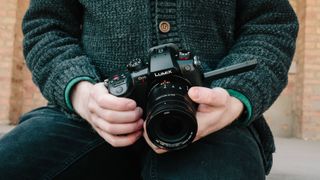
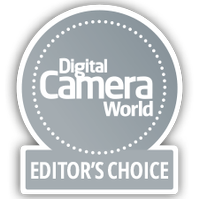
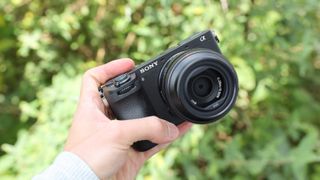
The Sony a6700 is a logical upgrade from the a6600, offering a compact rangefinder-style APS-C camera with some design refinements and jumps in technology. The biggest selling points are for hybrid shooters who want a compact camera but still want a viewfinder, as the a6700 has become the new Sony APS-C camera to buy for the best stills, but the leaps forward in 4K 120p video recording, IBIS, and the latest in AI autofocus make this a compelling alternative to Sony's ZV lineup.
The a6700 is a little pricey when compared to the competition. But overall, the a6700 is one of the best options for hybrid travel photographers or content creators that crave professional features in a compact package.
Read our Hands on: Sony A6700 reivew for more early verdict details
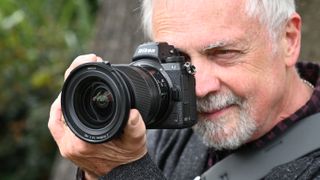
A solid refining of a camera that was already working well, the Nikon Z6 II ensures impressive shooting speeds in all modes by virtue of packing in two processors under its weather-proofed body. With a chunk of extra horsepower, it can capture stills at up to 14fps, and shoot 4K 60p video. In a nifty addition, it also features ‘hot-charging’ via USB-C, which in layman’s terms means you can charge the battery while using the camera, likely using a power bank or similar.
Nikon is clearly wooing filmmakers with this camera, so much so that it has also been released with an “essential movie kit” of accessories, including an FTZ Mount adaptor, an Atomos Ninja V monitor/recorder, a SmallRig quick release cage and some other sundries. The Ninja V in particular expands the utility of the Z6 II, granting access to 10-bit 4:2:2 recording via HDMI, 12-bit ProRes RAW and more.
Read more: Nikon Z6 II review | Nikon Z6 II Essential Movie Kit review

Sony should be commended for keeping older cameras in circulation even when new models come out to supersede them. As such, even though there’s been a Sony A7 IV released since, we’re picking 2018’s Sony A7 III for our hybrid cameras round-up, as it’s a superb proposition at the price, and is only getting cheaper as time goes on and cameras keep coming out.
The superb autofocus system is a standout on this camera, with 693 phase-detection AF points covering 93% of the frame, and 425 contrast-detect AF points. It was one of the most powerful ever made when the camera was released and still impresses now.
The A7 III is small even for a mirrorless camera, which some users like, but others find can easily result in an unbalanced setup, though this will only likely be a factor if you tend to use larger lenses.
Read more: Sony A7 III review
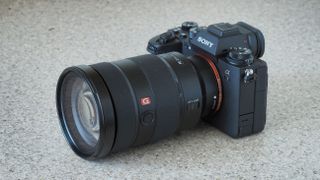
So far, we’ve been covering hybrid cameras that are going to be reasonably affordable for a lot of people – the Sony A1 is the camera for top-of-the-line pros who need the best, regardless of price.
It is a powerhouse of a camera: on the video side, it can shoot 8K video at up to 30p, or 4K at a highly impressive 120p. Stills-wise, meanwhile, it’s got a 51.4MP sensor, the ability to burst-shoot at up to 30fps, and a big buffer capacity to boot. All this is is encased in a body with absolutely superb handling, including one of the best electronic viewfinders ever to grace a mirrorless camera.
Of course, all this comes at a cost. The Sony A1 costs about as much as any two other cameras on this list combined. If you don’t need absolutely everything it can do, then it simply isn’t worth it. But if you do – well, you’ve got a spectacular camera at your disposal.
Read more: Sony A1 review
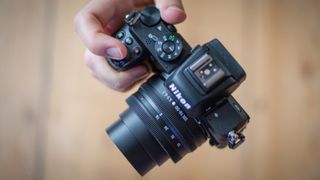
The Nikon Z50 is a perfect hybrid shooter for anyone who is looking to expand their creative opportunities but is maybe limited by budget. Nikon has made some savings by eliminating a few components you would find in higher-end cameras, but you are still left with a very robust and modern set of features that will please almost any casual user.
This camera really performs in the image department, with an excellent 20.9MP sensor for stills, Nikon's well-regarded hybrid autofocus system from its higher-end cameras, 11fps shooting, and some impressive low light capabilities thanks to a native ISO range of ISO100-51,200. But it doesn't let up on the video thanks to video recording in 4K up to 30fps using the whole sensor, so no unwieldy video cropping, which can't be said for some of its rivals.
One glaring omission is the lack of IBIS, although not surprising at this price point, so you will need to buy a lens with some IS built-in if you want to get the most from your videos.
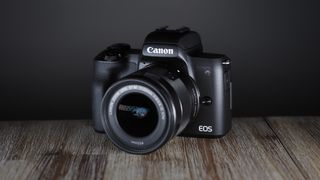
At the other end of the scale from the Sony A1, we have this lightweight offering from Canon. The EF-M series has often felt like a bit of an unloved child in the past, but it has come into its own and blossomed into an enduringly popular series of small mirrorless cameras for those who like to shoot photos and video.
As such, this camera impresses with its specs in both directions, from the Dual Pixel CMOS autofocus that ensures pin-sharp stills, to the clean HDMI out that gives video users the option to broadcast live.
Just be forewarned – the 4K on the EOS M50 Mark II is viciously compromised, with only the inferior contrast-detect system for autofocus, and a nasty 1.6x crop. Shooting in Full HD corrects both of these problems, so in most situations, there’s no reason to do anything otherwise.
Read more: Canon EOS M50 Mark II review

In Canon’s flagship EOS R series, cameras like the EOS R5 and EOS R3 may hog the headlines and the limelight, but in the meantime, the EOS R6 quietly goes about its business of being one of the best hybrid cameras you can buy.
As we said in our review, it shoots pretty much anything, and thanks to its otherworldly autofocus and supreme in-body image stabilisation, you can all but guarantee you’ll never miss the moment. The selection of RF lenses is filling out deliciously too, so you’ll have no shortage of glass to choose from.
Some stills photographers may bemoan the fact the 20.1MP is a few pixels under the average for a camera of this class, while video users may chafe against the 4K recording limits. But if neither are deal-breakers for you, this is a hell of a camera.
Read more: Canon EOS R6 review

The Fujifilm X-T5 is the latest in the hugely popular X-series range. Cheaper than the flagship X-H2S, it has built upon the foundation of the beloved X-T4 but has completely one-uped its older sibling in every department.
The camera is still beautiful to behold with its classic retro styling, and it keeps its great tactile manual dials but is now more compact and lightweight than ever. The XT-5 is also a step up internally, using the same excellent sensor as the X-H2S, with a substantial bump to 40.1MP, it is capable of 1/180000 sec shutter speed and 20fps.
Even though marketed more at photographers, the video is certainly no slouch, offering 10-bit 4:2:2 video at 6.2K/30P internally. These combined make it our new favorite Fujifilm hybrid shooter.
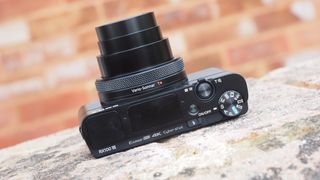
If you want the best quality images and video in the smallest possible form factor then the Sony RX100 VII is the way to go. Defying the naysayers that claim compact cameras are a relic, Sony continues to pack astounding features into these tiny cameras.
Whilst this camera is limited in its creativity by its smaller than usual 1.0in sensor and its fairly standard 24-200mm F2.8-4.5 zoom lens, it makes up for it in spades with its excellent image quality and amazing 4K footage. The autofocus is frighteningly fast and accurate, with a buffer rate of 20fps, Sony itself even likens its performance to its flagship Sony A9 camera.
As long as you are realistic about what this camera can achieve then it will no doubtedly delight you as the perfect vlogging camera or travel companion.
How we tested the best hybrid cameras
We test cameras both in real-world shooting scenarios and, for DSLRs and mirrorless cameras, in carefully controlled lab conditions. Our lab tests measure resolution, dynamic range, and signal-to-noise ratio. Resolution is measured using ISO resolution charts, dynamic range is measured using DxO Analyzer test equipment and DxO Analyzer is also used for noise analysis across the camera's ISO range. We use both real-world testing and lab results to inform our comments in buying guides. Find out more about how we test and review.
